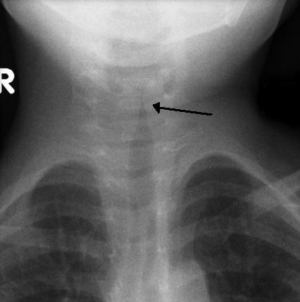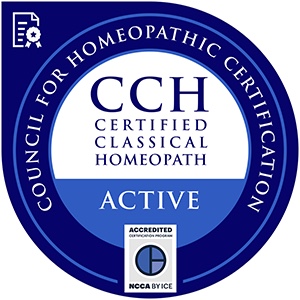
Remedies for Croup – Hepar sulphuris calcareum
Nothing contained here should be taken as medical advice for any particular case of disease. Whenever in doubt, it is best to seek qualified medical help.
There are many homeopathic remedies that are useful in croup, but we do have a classic triad of remedies that are frequently useful for those middle of the night, sudden onset croups, when contacting a homeopath may be difficult.
In recent posts, we considered Aconitum napellus and Spongia tosta as the remedies we think of first when a child wakes with croup. Aconite is most useful when the symptoms come on very suddenly with high fever, often around midnight or after exposure to cold, and the child is very fearful. Spongia may be useful after Aconite has helped the fever, or if the fever and fear are not so pronounced. Coughs that need Spongia tend to come on before midnight and are also worse in warm rooms.
The third remedy that covers these nighttime croups is called Hepar sulphuris calcareum, or Hepar sulph, for short. By contrast with the other remedies, a croup that needs Hepar sulph will be noticeably worse when the child uncovers or if there is a draft of air in the room. The child may sit up or throw the head back to breathe.
To recap briefly, croup is an inflammation of the entire middle section of the lower respiratory tract. It’s a childhood disease, and it usually follows a viral infection of the upper respiratory tract. Often, the child has had a cold with a runny nose, and now the child’s larynx, trachea and bronchii have become simultaneously swollen with a loose membrane (see image below) that vibrates when the child coughs. Classically, there is also difficulty breathing, with audible sounds on inspiration and pulling in the chest, neck and abdominal muscles to breath (see video).
Hepar sulph is made from impure calcium sulfide, the product of heating bits of oyster shell and pure sulphur together under a white-hot flame. (This was an old technique used by early homeopaths.) In the original test of the drug, the subjects suffered from intense sensitivity to pain, to touch and to cold, from sharp pains in various parts of the body, pus-like discharges, a desire for acidic foods and irritability. These are some of the strong indicators that someone might need Hepar sulph homeopathically.

Licensed under CC BY-SA 3.0 via Commons
Croupy coughs that need Hepar sulph can be very similar to those that need Aconite. Both may come on after exposure to cold. Both may come with high fever. But even though cold may have brought on an Aconite croup, children who need Aconite tend to want open air.
By contrast, children who need Hepar sulph want nothing at all to do with open air or cold air or the slightest draft of air. They feel chilly and want warm drinks. They perspire and feel horribly weak. They cover up carefully, keeping the air off their skin. They don’t want to be touched, and even when scared, kids who need Hepar sulph are predominantly oversensitive and cranky. If they have pains anywhere, those pains will be intense and usually very sharp. In croup with difficult breathing, the child may throw their head backwards to help open up the airway.
Sometimes, a child’s fever and cough will respond well to a dose of Aconite after the first waking, but subsequent doses may not help. That’s when you want to figure out whether the croup is aggravated by warmth (needing Spongia) or by cold or moving air (needing Hepar sulph). If one of these remedies is not a perfect match, a parent may end up changing remedies as these aggravations change.
How quickly should a remedy help? In an acute complaint like croup, the remedy should help almost immediately. If you haven’t noticed an improvement after the second dose, or by the time you’re dressed and in the car (you’re seeking medical help, right?), it’s time to try another remedy.
(Tips for dosing: (1) If you’re putting together a collection of home remedies, 30C is a good potency for treating acute conditions; (2) The remedy manufacturers often suggest giving 3-5 pellets in one dose, but I have always found one pellet of the correct remedy to be sufficient; (3) When a remedy is helping, let it help until it stops, then repeat the remedy if still needed; (4) When the symptoms are gone, the disease is gone, and there is no reason to continue dosing; and (5) If at any point the person goes for two or more doses without improvement, re-consider the symptoms to see if a different remedy might be helpful.)
###





